Buses, SkyTrain, SeaBus, and the West Coast Express are the main transit options in the Greater Vancouver area today. However, Open Collections has many images of the railroads and streetcars that used to line our streets. From 1897 until 1958, the British Columbia Electric Railway (BCER) operated streetcars and interurbans, which were the major transportation options for people at that time.
Brief History of Streetcars and Interurbans in BC
The first streetcar services in BC began in Victoria, operated by the National Electric Tramway and Lighting Company Ltd., in February 1890. Four months later, the first regular streetcar service was started in Vancouver by Vancouver Electric Railway and Light Company Ltd. By October 1891, the service area was expanded to New Westminster by the Westminster and Vancouver Tramway Company. The company also launched Canada’s longest interurban line between Vancouver and New Westminster. Eventually, the three companies merged as the British Columbia Electric Railway Company Limited (BCER) on April 3, 1897, and started to manage all of the transportation services.
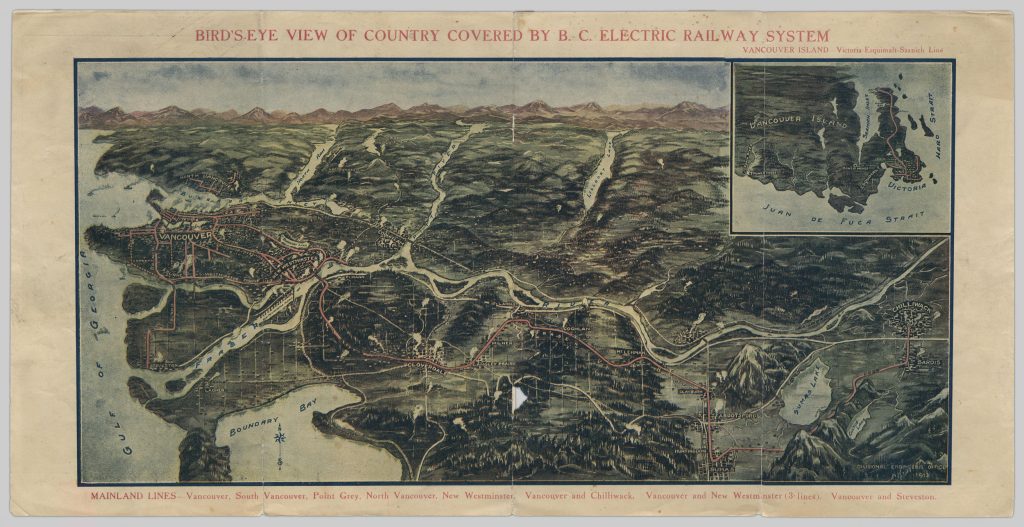
British Columbia Electric Railway Company. Tips for tourists: interurban trips over B.C. Electric Railway system, in vicinity of Vancouver, British Columbia, [1913?].
The following are photographs depicting streetcars in BC from the Uno Langmann Family Collection of British Columbia Photographs:
You can also find interurban lines in the BC Historical Books Collection:

British Columbia Electric Railway Company. British Columbia Electric Railway Co. Ltd. : N.E.L.A. Convention, Seattle, June 10-14, 1912, [1912].
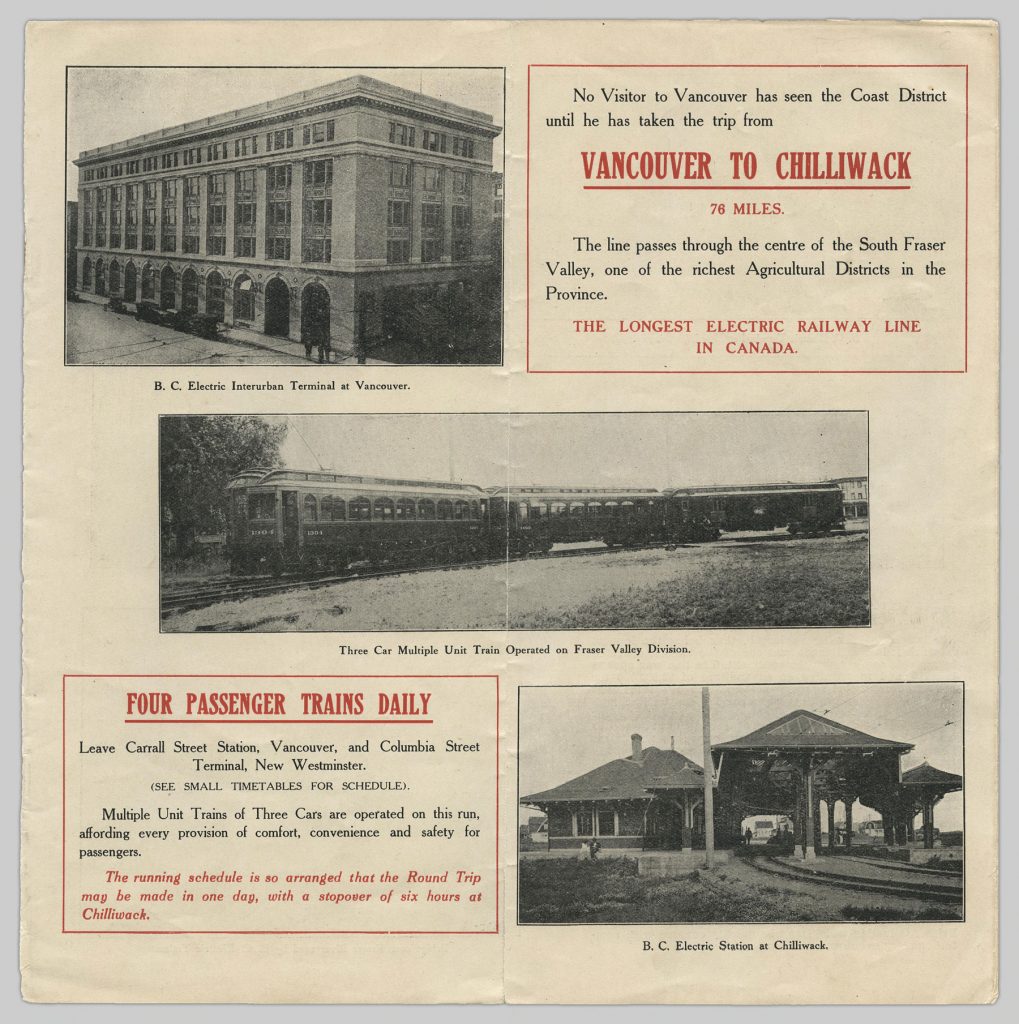
British Columbia Electric Railway Company. Tips for tourists: interurban trips over B.C. Electric Railway system, in vicinity of Vancouver, British Columbia, [1913?].
Observation Streetcars
Around 1909, BCER purchased the designs of open-air sightseeing cars from the Montreal Tramways Company and constructed the cars in New Westminster. Thadeous (Teddy) Sylvester Lyons was a popular tour conductor, known for his wit and jokes while operating this service until it stopped running in 1950.
UBC Motor Buses
Motor buses were the main transit option for students and employees heading to UBC. In Carrying the People ([1929]) by British Columbia Electric Railway Company, UBC was considered the busiest route:
The U.B.C. Rush
Consider the problem of the University. Between 8 o’clock and 9.15 in the morning, transportation is required for more than fifteen hundred students and no sooner is this accomplished than the traffic falls off to nothing. In the afternoon the same surge occurs in the opposite direction and then zero in traffic again. […] There is no busier spot in Vancouver than this transfer point as the University rush is at its height each morning. (pp.7-8)
The End of Streetcars/Interurbans Services
Around the time of the Second World War, the BCER streetcar and interurban services were approaching their end due to the high cost of maintaining the train tracks. The BCER decided to do “Rails-to-Rubbers” conversion throughout the entire transit system, changing from streetcars using tracks to buses with rubber tires.
The final run of Vancouver’s streetcar was in 1955. The last interurban car ran between Marpole and Steveston on February 28, 1958, and the rail passenger service by BCER ended.
Ever since the BC government took over the BCER in 1961, we have used “rubber” buses and automated trains as our primary transportation tools in BC. At UBC Vancouver campus, there are 15 bus routes to Metro Vancouver and two routes serving on-campus areas today.
If you want to explore more materials about BC transportation history, please visit our Open Collections.
References
- British Columbia Electric Railway Company Limited by Henry Ewert (Canadian Rail: The Magazine of Canada’s Railway History, No. 534, pp. 3-9)
- A short history of interurbans in the Lower Mainland (The Buzzer Blog, March 24, 2009)
- Vancouver’s Open Air Streetcar by Daniel (Knowbc Blog, September 15, 2009)
- Vancouver Transit: The Era of Street Cars by Vancouver Heritage Foundation (Spacing Vancouver, June 18, 2013)
- BC Electric Railway (Our History, Fraser Valley Heritage Railway Society)
- Bus (UBC Vancouver Campus, Transportation)
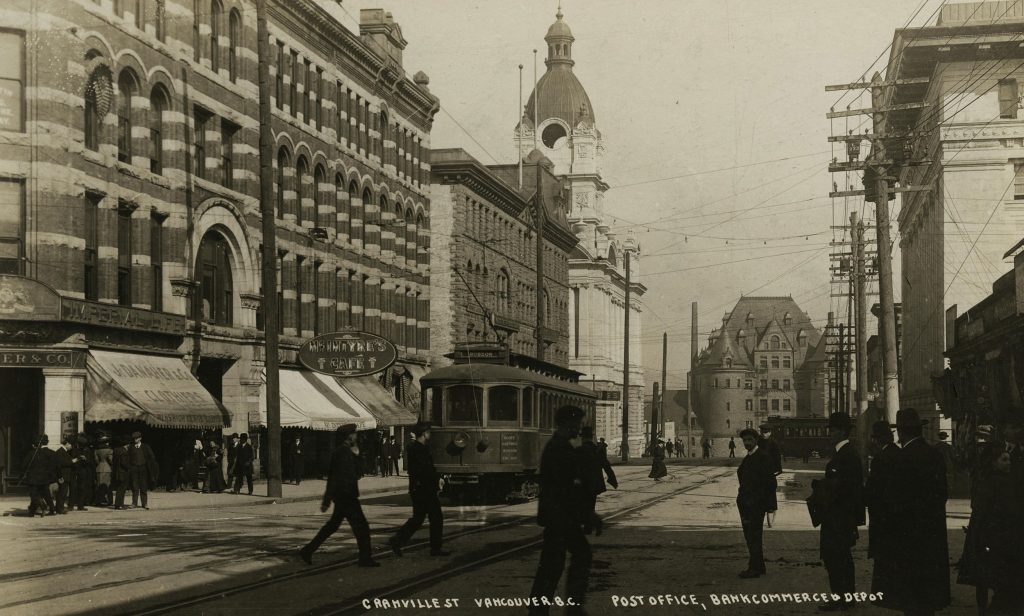
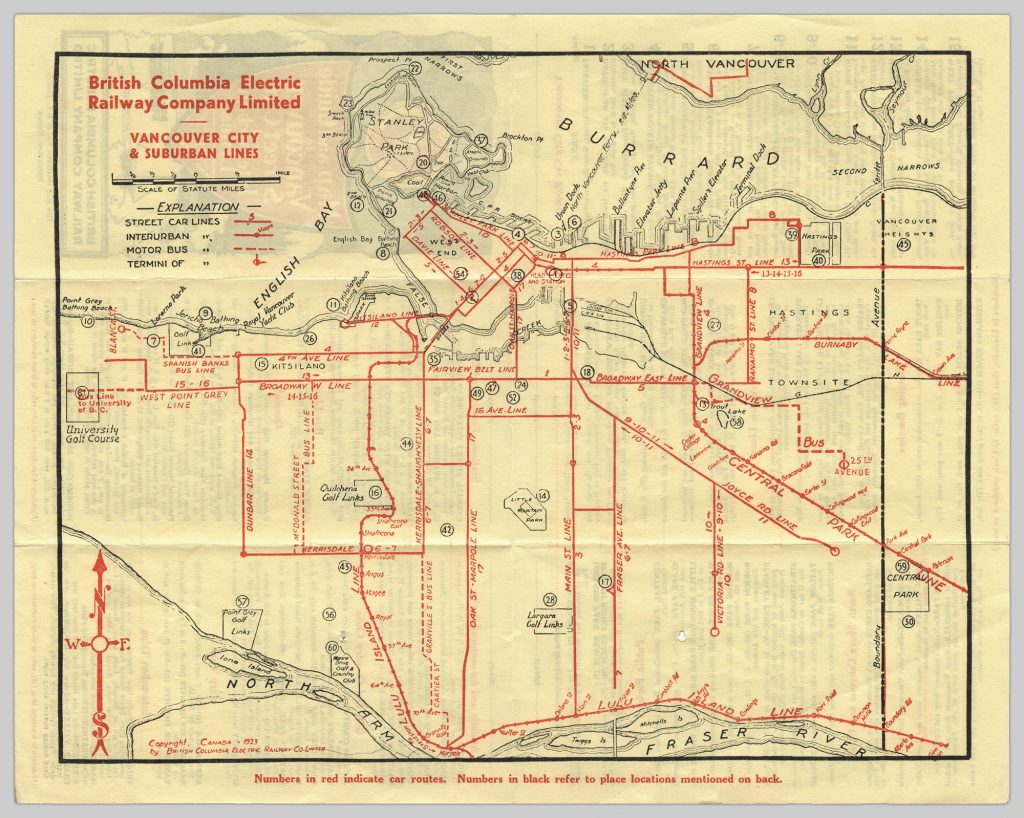
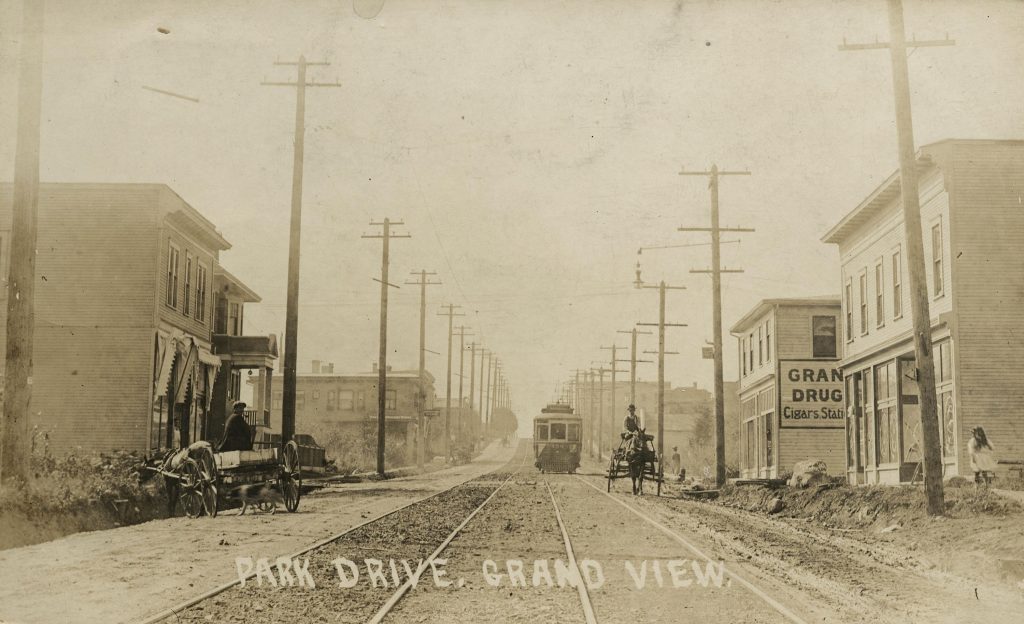
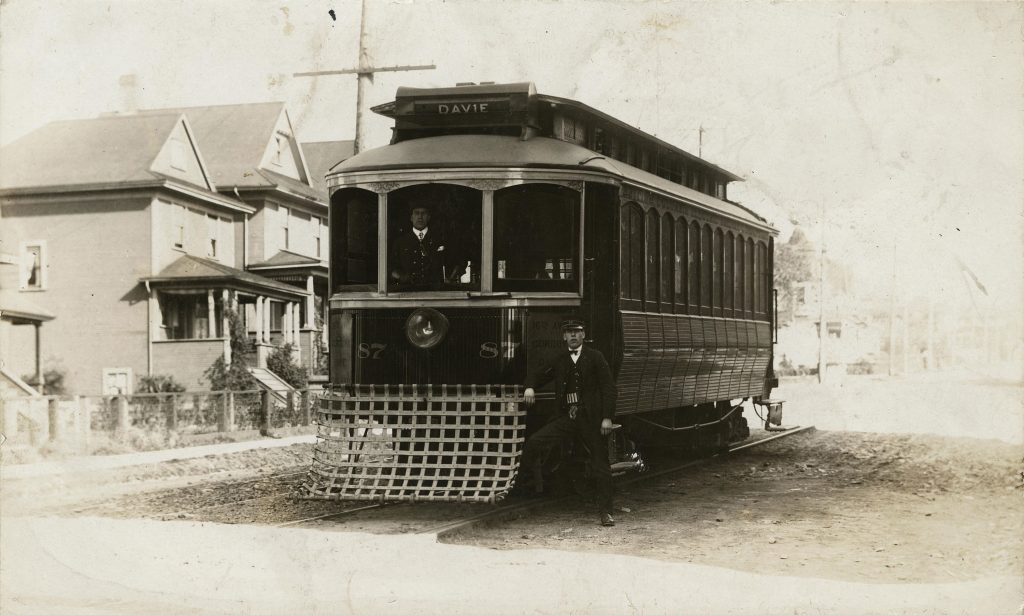

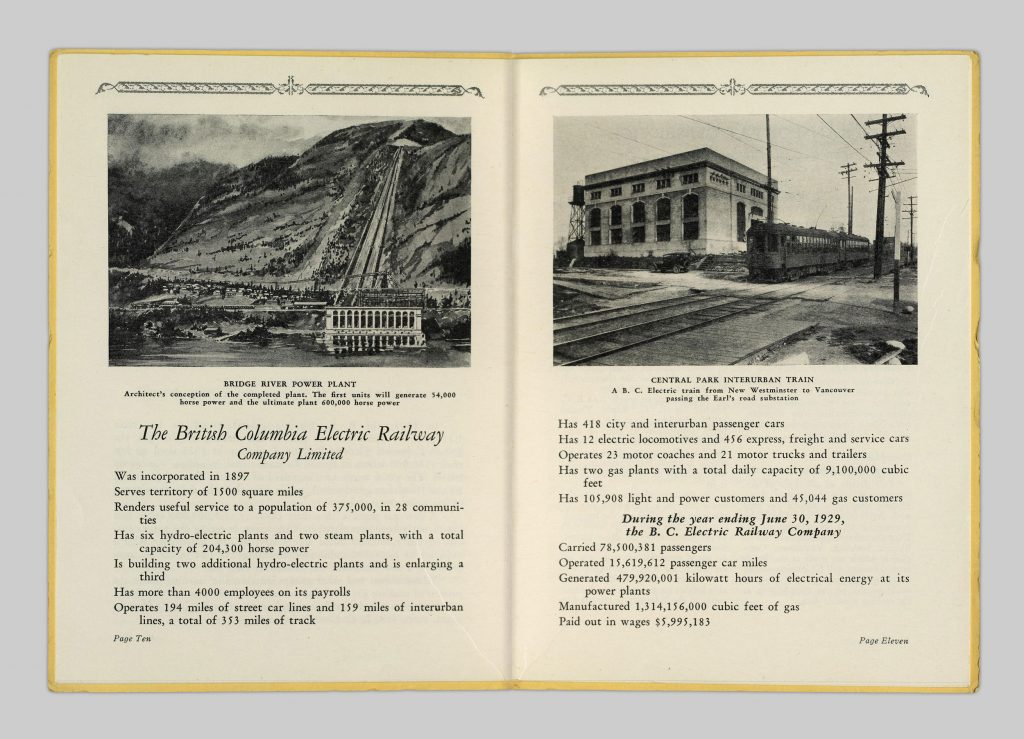
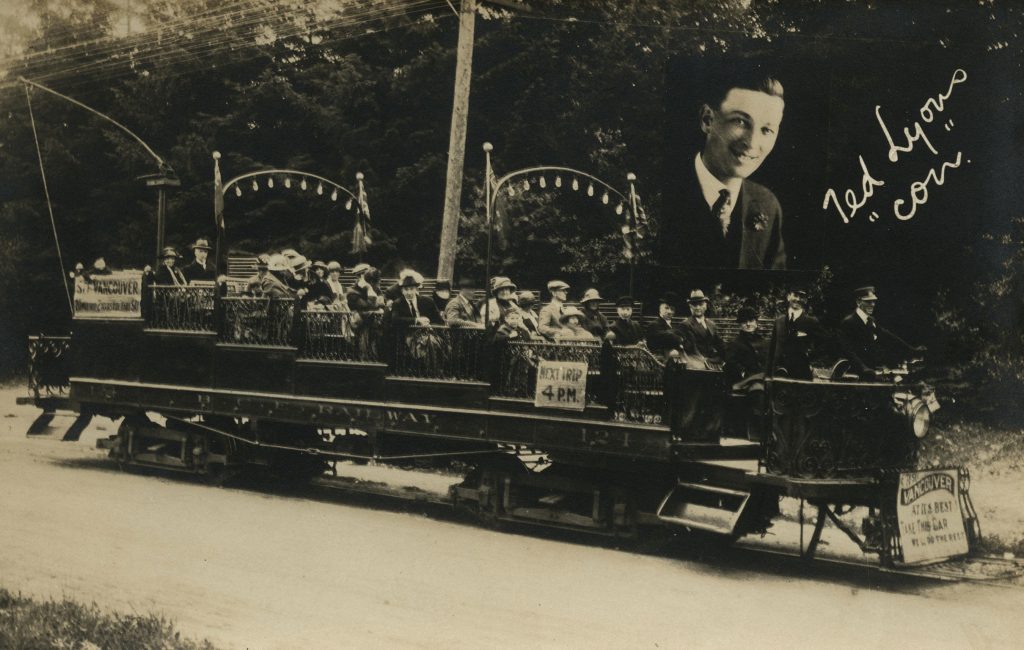
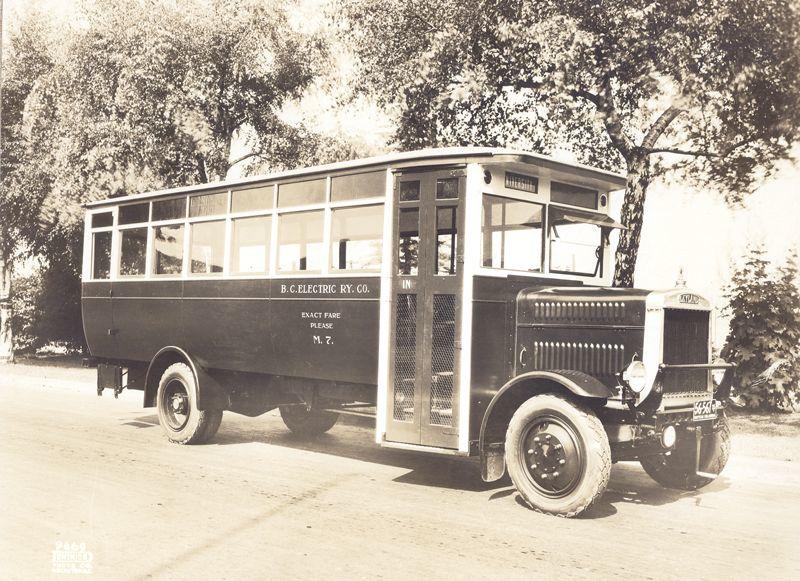
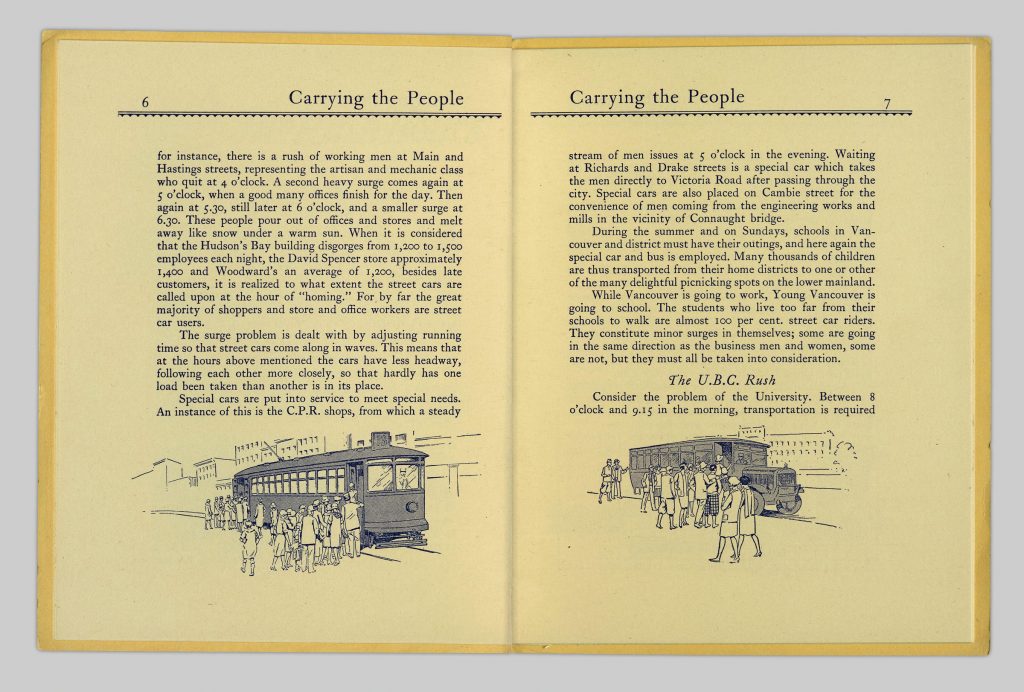
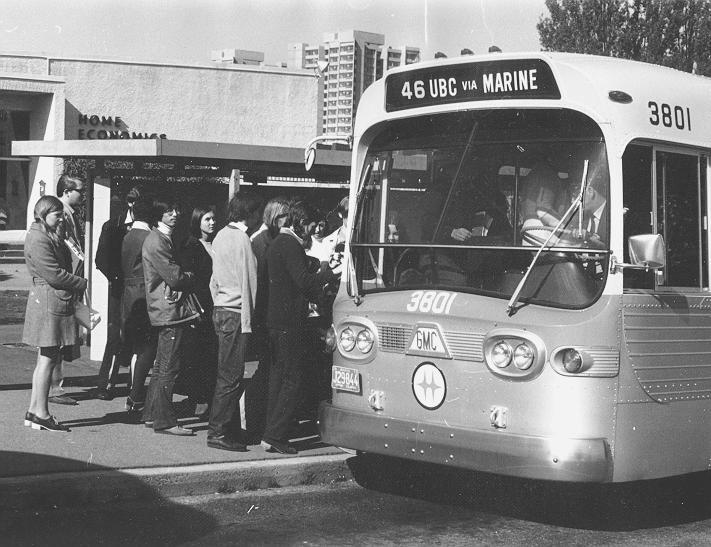



In the final section, reference is made to “Stevenson”. Should that not be ‘Steveston”?
Thank you very much for your comments, Ken!
great article.
Regarding the permalink to the sketch of interior of streetcar. It is missing the colon after https and will not resolve.
Hi Michael,
Thank you so much for reading the article and noticing the issue with that link. It has been fixed and should be working!
Best,
Digitization Centre Team